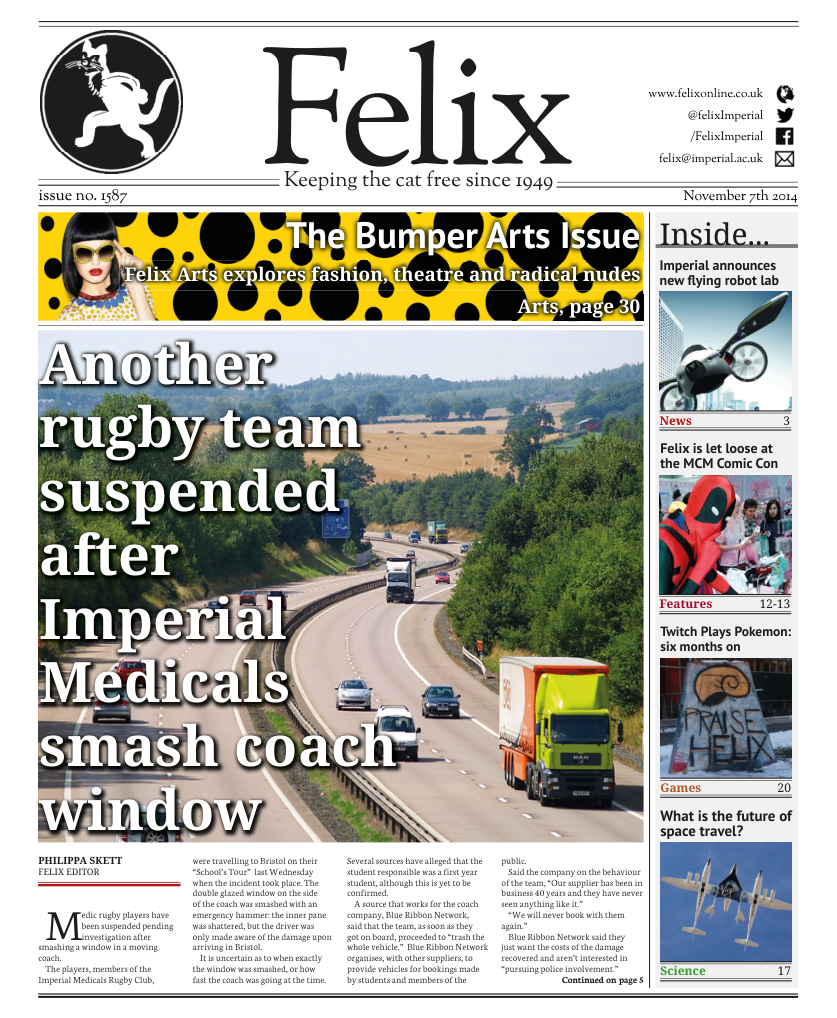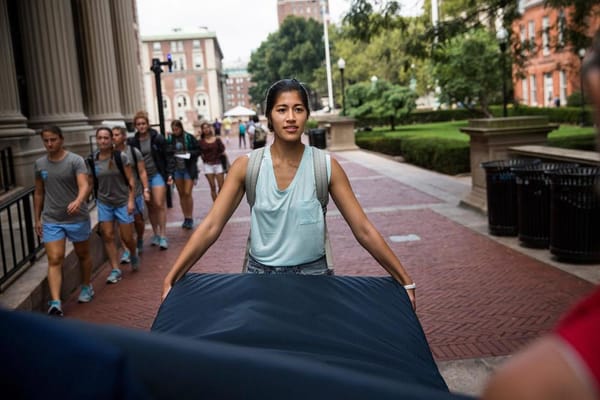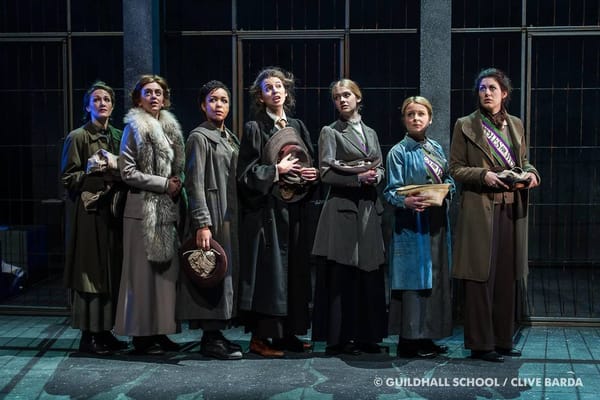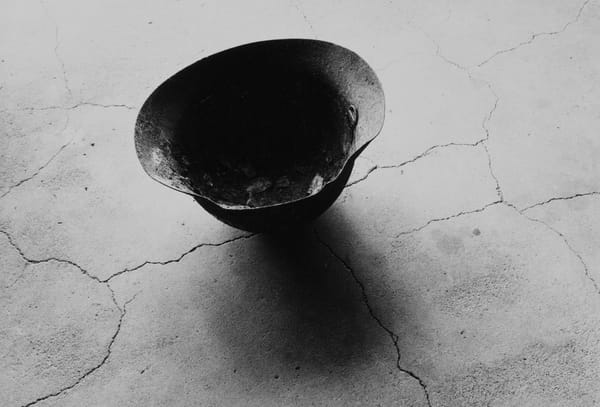Two Worlds of Fashion, Complete Poles Apart
Fred Fyles visits The Photographers' Gallery to see what's trendy
On 25th January, 1955, the MoMA opened its doors to the most ambitious photography exhibition ever conceived. Titled The Family of Man, the 503 photos aimed to reflect the world around us, highlighting the similarities between vast numbers of people who were just beginning to get their postwar lives together, living in the atomic shadow of Hiroshima. After its wildly popular run in New York, the exhibition toured the world for 8 years, building up a staggering attendance of 9 million; in 2003 its historical value was recognised by UNESCO, who placed the exhibition in their permanent archives. The curator of this grand spectacle? Edward Steichen – intellectual royalty, Academy Award winner, and one of the most influential fashion photographers of his time.
Steichen is also the subject of a new retrospective at The Photographer's Gallery, who eschew his earlier, pictorialist work, instead taking as their starting point 1923 – the year Steichen was hired by _Conde Nast _to be the chief photographer for _Vanity Fair _and Vogue. Over the next 14 years he would revolutionise the fashion photography industry, dragging it blinking into the bright world of modernism.
The series of photos chosen in the exhibition are pretty evenly split between portraits of famous personalities and glossy fashion spreads for the magazines.
His approach to composition has helped form our idea of the 1920s, with his photos seeming to perfectly encapsulate the bright young spark that drove the motor of this roaring decade. With the most modern fashions captured against supremacist-inspired backdrops, the models seem to be archetypes of ‘liberated women’ – from flapper girls to grand dames, artists to dancers, Steichen imbues each with their own individual quality.
Steichen’s mastery of artificial lighting means that each and every photograph, although taken in black & white, seems to have its own inner warmth that radiates out.
His series of actor’s photographs are equally as impressive; having spent his formative years in New York photographing some of the most famous artists of the time, it seems Steichen had long since lost any trepidation that may accompany photographing – that most intimate of actions – innumerable stars.
These portraits of actors are early precursors of the modern cult of celebrity.
We have Joan Crawford, wrapped in a black dress that drapes off her body, haughtily looking down on the world like an icy statue, her famously expressive eyes downcast. Elsewhere Marlene Dietrich, that most alien of icons, is bathed in a soft glow; her eyes turned up towards us, almost as if in pain, and her hand outstretched, like an opium-eater on the verge of a come-down.
There is a great deal of contrast at play in Steichen’s work, not only between black and white, but also between the clothing and their environments. Particularly in his early work the women are weighed down with repressive clothing, completely at odds with the modern, almost Bauhaus-esque backdrops. It seems that even with complete control over the camera and the scene, the things Steichen could not control were the clothes themselves.
Some portraits, however, are startling in their modernism, particularly his iconic portrait of Greta Garbo: dressed all in black, her arms move up to push her hair back, revealing her clear-cut cheekbones and almost pallid skin. Her body – ensconced in a turtleneck – seems to dissolve into the bottom of the photograph, while the two planes of light play against her skin, pulled taut against her skull. She no longer resembles an actor; she is an icon of modernity and death, a vision of Bergman’s Nordic blues.
Moving downstairs, we find a photographer whose work is the complete opposite of Steichen’s: Viviane Sassen, a Dutch photographer who has forged strong links with i-D, AnOther, and _Dazed and Confused _magazines. The difference could not be more striking: while Steichen’s work is firmly rooted in depression-era Hollywood glamour, Sassen’s is unquestionably contemporary; while Steichen relied on traditional techniques of black & white silver-gelatin plates, Sassen is happy to mess around with new perspectives, digital techniques, and photoshop; and while Steichen harnesses complete control over the multitude of greys that exist between both ends of the spectrum, Sassen’s eye-popping works are hypersaturated in vibrant, exuberant colour.
What sets Sassen apart from her peers is her meticulous eye for detail, and a bold willingness to shift the focus away from clothes, instead following her own singular vision. Some photographs have elements of surrealism, where dresses resemble triffid-like blooms as opposed to clothing; others see Sassen marrying sartorial realness with a sense of body horror, like the twisted offspring of David Cronenberg and Guy Bourdin. Her irreverent and humourful attitude to fashion is clear: ‘for me, fashion is one big playground, a place to experiment’.
Unfortunately, her work is not given the opportunity to shine that it so sorely deserves. Taking on a more conceptual form than the Steichen collection, Analemma is exhibited as a 45 minute film, in which 350 pictures are run on a loop while a minimal soundtrack plays in the background. While presenting content in such a way is certainly novel, and allows us to really get an idea of the key themes in Sassen’s work, it doesn’t allow us to experience its full breadth. It also means that we are not allowed to spend long lingering over a picture we particularly love, or skip those one finds boring; they all move past us at the same meandering speed.
The Photographer’s Gallery does very well to pull off these two shows, highlighting a discipline that is much maligned in mainstream artistic culture. By showing us two ends of fashion photography’s timeline, the viewer is able to chart the development of the form, from a medium focussed purely on selling overpriced clothes to one that celebrates the artist’s vision and skill, while still trying to sell overpriced clothes. I guess some things never change.
Edward Steichen: The Conde Nast Years, and Vivenne Sassen: Analemma are on until 18th January 2015










